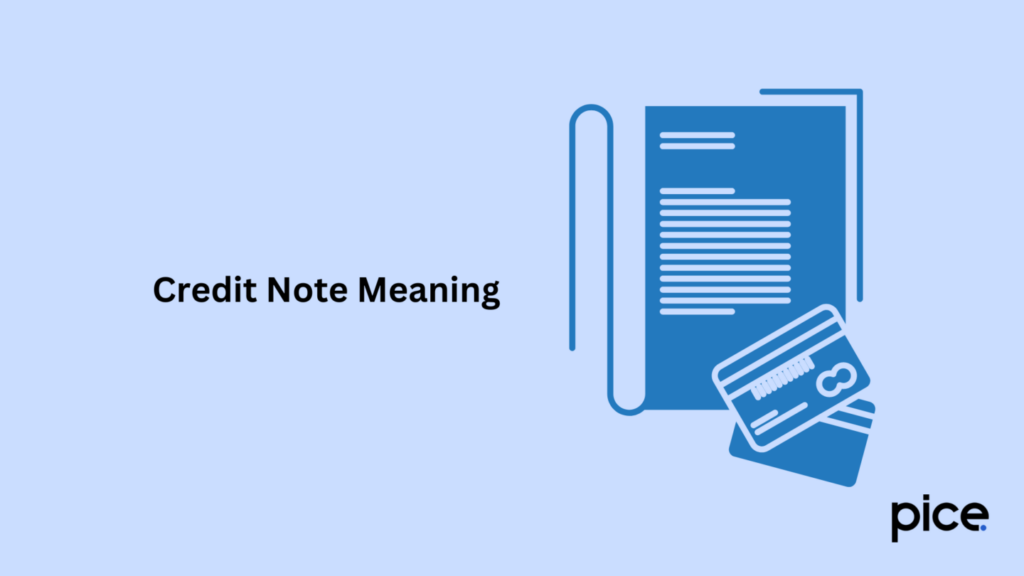How to Create a Journal Entry for GST Credit Notes?
- 6 Sep 24
- 13 mins

How to Create a Journal Entry for GST Credit Notes?
Key Takeaways
- Credit notes are essential for adjusting sales returns, overcharges, and GST liabilities, ensuring accurate financial records.
- Issuing a credit note in GST involves referencing the original invoice, adjusting amounts, and ensuring compliance with tax regulations.
- Proper journal entries for credit notes help maintain compliance with GST rules, accurately reflecting the business’s financial position.
- Recording credit notes correctly avoids discrepancies during audits and streamlines the GST return filing process.
- Understanding and applying GST credit note rules is crucial for managing tax obligations and preventing overpayment or underpayment.
Credit notes play a crucial role in accounting and GST compliance, especially when dealing with sales returns, discrepancies, or overcharging issues. This blog explains into the concepts of credit notes, covering everything from their meaning and purpose to the steps involved in their creation and the journal entries required for accurate accounting.
Credit Note Meaning

A credit note is a document that a supplier issues to a customer to lower the amount the customer owes the supplier. It is typically issued in cases where there has been an overcharge, incorrect goods or services delivered, or when goods are returned. The credit note adjusts the initial invoice, thereby reflecting the correct amount payable.
Reasons for Issuing a Credit Note
Credit notes are issued for a variety of reasons, each reflecting a specific scenario where the original invoice requires adjustment. Below are some of the most common reasons for issuing a credit note:
1. Sales Returns
One of the primary reasons for issuance of credit note is sales returns. When a customer returns goods due to defects, damages, or other issues, the supplier must adjust the original sale by issuing a credit note. This ensures that the customer's account reflects the reduced liability and that the supplier’s sales records are accurate. The credit note issued in this case serves as a correction to the original sale transaction.
2. Overcharging
Sometimes, an invoice is mistakenly raised for an amount higher than the correct price. This can happen due to errors in pricing, quantity, or other details. When such an overcharge is identified, the supplier must issue a credit note to correct the amount. The credit note ensures that the registered supplier's records reflect the correct revenue and the customer is not overcharged.
3. Discounts Post-Invoice
In certain situations, a discount is agreed upon after the initial invoice has been raised. This could occur due to negotiations, promotional offers, or other circumstances. To reflect this adjustment, a credit note is issued, which reduces the amount due from the customer by the agreed discount. This post-invoice discount must be documented properly to ensure compliance with GST credit note rules.
4. Errors in Invoice
Errors in the original invoice, such as incorrect descriptions of goods or services, wrong quantities, or incorrect prices, necessitate the issuance of a credit note. This correction helps in maintaining accurate records and ensures that the tax liability is calculated correctly. The credit note issuance in this context is vital to avoid discrepancies during the annual return filing and to comply with the GST regulations.
5. Wrong GST Rates
If the wrong GST rates were applied in the original invoice, a credit note must be issued to rectify the error. Applying the incorrect rate of tax can lead to significant compliance issues, including overpayment or underpayment of GST. The issuance of a credit note in this scenario adjusts the GST liability to the correct amount, ensuring that both the supplier and the customer adhere to the correct tax obligations.
6. Issuance of a Debit Note
In some cases, the issuance of a debit note by the customer may necessitate the issuance of a corresponding credit note by the supplier. This is particularly relevant when the customer identifies an issue with the goods or services and raises a debit note to reduce their liability. The supplier then issues a credit note to reflect this adjustment in their books.
7. Corrections in Address of Delivery
If there is a mistake in the address of delivery on the original invoice, a credit note may be issued to correct this detail. Although this might seem minor, accurate address details are essential for maintaining proper records, especially in cases of inter-state or intra-state transactions where tax implications might vary.
8. Adjustments to Original Sale
In some cases, after the goods or services have been provided, the terms of the original sale might change. This could be due to a renegotiation of terms, additional services being provided, or changes in the scope of work. A credit note is then issued to adjust the original sale amount, reflecting the new terms agreed upon between the supplier and the customer.
Steps to Create a Credit Note in GST
Creating a credit note in GST involves the following steps:
- Step 1: Reference the Original Invoice - Ensure that the credit note references the original invoice against which it is issued.
- Step 2: Calculate the Adjustment - Determine the amount by which the original invoice should be adjusted.
- Step 3: Include Relevant Details - Add essential details such as the customer’s name, the date of issuance, and the reason for the credit note.
- Step 4: Apply the Correct GST Rate - Ensure the GST rate applied on the credit note matches that of the original invoice.
- Step 5: Issue and Record the Credit Note - The credit note should be issued to the customer and recorded in the supplier's accounting system.
Process of Issuing Credit Note in GST
Issuing a credit note under the Goods and Services Tax (GST) regime is a critical process for adjusting the taxable value and tax liability on previously issued invoices. The process involves several key steps that ensure compliance with GST regulations.
Below is a step-by-step guide to issuing a credit note in GST, incorporating important concepts and details:
Step 1: Logging into the GST Portal
The first step in issuing a credit note is to log into the official GST portal using your registered GST Identification Number (GSTIN) and password. The GST portal is the primary platform where all GST-related transactions, including credit note issuance, are recorded and managed.
Step 2: Navigating to the ‘Credit Note’ Section
Once logged in, navigate to the ‘Returns’ tab on the GST portal. Within this section, you will find the option to create a credit note. This area is specifically designed to handle adjustments related to sales, ensuring that credit note entries are accurately recorded against the relevant tax invoices.
Step 3: Entering the Details of the Credit Note
In this step, you must enter all the necessary details associated with the credit note. These details typically include:
- Original Tax Invoice Number: Reference the original invoice against which the credit note is being issued. This ensures that the credit note correctly adjusts the specific transaction.
- GSTIN: Include the GSTIN of both the supplier and the recipient, ensuring that the transaction is properly recorded for both parties.
- Amount and Tax Details: Enter the amount by which the original invoice is being reduced. Also, include the GST amount that needs to be adjusted, categorized into CGST, SGST, or IGST as applicable.
- Credit Note Issue Date: Record the date on which the credit note is issued. This date is crucial for ensuring compliance with the time limits prescribed under GST rules.
Step 4: Saving and Submitting the Credit Note Details
After entering all the necessary information, review the details for accuracy. Once verified, save the credit note and submit it through the GST portal. This submission records the credit note officially, adjusting the supplier’s and recipient’s GST liabilities accordingly.
Step 5: Recording the Credit Note in Accounting Books
After issuing the credit note on the GST portal, it is essential to record the transaction in your accounting system. This involves making the appropriate journal entries to reflect the reduction in sales and tax liability. Proper recording ensures that your financial statements accurately represent the transaction and that there are no discrepancies in your GST returns.
What is the Time Limit for Credit Note in GST?

As per GST law, a credit note must be issued by the earlier of the following:
- The date of filing the annual return for the financial year in which the original invoice was issued.
- September 30th of the year following the financial year of the original invoice.
GST Credit Note Format
A GST-compliant credit note format includes:
- Supplier Details: Name, address, and GSTIN.
- Customer Details: Name, address, and GSTIN.
- Original Invoice Number: Reference to the original invoice.
- Credit Note Number: Unique serial number for the credit note.
- Date of Issuance: Date on which the credit note is issued.
- Details of Goods/Services: Description, quantity, and amount.
- Tax Amount: GST applied, categorized into CGST, SGST, and IGST as applicable.
- Reason for Issuance: Clearly mention the reason for issuing the credit note.
How to Make Journal Entries for Credit Note?
Recording journal entries for credit notes is essential to ensure that your accounting books accurately reflect the financial transactions and adjustments made due to sales returns, overcharged invoices, or input tax credit adjustments.
The nature of the transaction dictates the specific journal entries required. Below are detailed explanations of how to record these entries:
1. Journal Entries for Sales Return
When a customer returns goods, it necessitates a reduction in sales revenue and a corresponding reduction in the amount receivable from the customer. The credit note issued for a sales return reflects this adjustment. The following journal entry is made:
- Debit: Sales Return Account
This entry reduces the total sales revenue by the amount of the return, acknowledging that the goods sold have been returned and are no longer part of the sales. - Credit: Accounts Receivable (Customer)
This entry decreases the amount owed by the customer, reducing the accounts receivable. It reflects that the customer is no longer liable to pay for the goods they have returned.
This adjustment ensures that both sales figures and receivables are accurately represented in the supplier's financial statements.
2. Journal Entries for Overcharged Invoice
If an invoice was raised for an amount higher than what should have been charged, a credit note must be issued to correct this overcharge. The journal entries for this adjustment are as follows:
- Debit: Sales Account
This entry reduces the sales revenue to reflect the correct amount that should have been billed. It corrects the initial overstatement of sales that occurred due to the overcharge. - Credit: Accounts Receivable (Customer)
This entry decreases the amount that the customer owes, adjusting the accounts receivable to the correct amount. It ensures that the customer’s account reflects the accurate liability.
These journal entries are crucial for maintaining the accuracy of sales figures and receivables, ensuring compliance with GST credit note rules and preventing discrepancies during the annual return filing.
3. Journal Entries for Input Tax Credit Adjustment
When a credit note affects the amount of GST previously paid, an adjustment to the input tax credit (ITC) is required. This adjustment is reflected in the following journal entries:
- Debit: GST Output Liability
This entry decreases the GST liability by the amount of GST that is no longer payable due to the issuance of the credit note. It reflects the reduced tax obligation after adjusting for the credit note. - Credit: Input Tax Credit (GST Payable)
This entry reduces the input tax credit that can be claimed, aligning the GST payable with the actual liability after accounting for the credit note. It ensures that the tax records reflect the correct amount of GST due.
These journal entries are vital for accurately adjusting the GST liability and input tax credit, ensuring compliance with GST regulations and preventing overpayment or underpayment of taxes.
Why Accurate Journal Entries for Credit Notes are Important
Accurate journal entries for credit notes are critical for several reasons:
- Reflecting True Financial Position: Properly recorded journal entries ensure that the financial statements present a true and fair view of the business's financial position, considering all adjustments for returns, overcharges, and tax credits.
- Compliance with GST Regulations: Correct journal entries ensure that the business complies with GST regulations, particularly in terms of tax liability adjustments and input tax credit claims.
- Avoiding Discrepancies: Accurate records help prevent discrepancies during audits and the filing of annual returns, reducing the risk of penalties or additional tax liabilities.
- Streamlining Financial Reporting: Proper journal entries for credit notes streamline the financial reporting process, making it easier to track sales returns, corrections, and tax adjustments.
Conclusion
Credit notes are vital in ensuring accurate financial records and maintaining GST compliance. By following the correct process for creating and issuing credit notes, businesses can avoid discrepancies in their accounting records and GST returns.
Understanding the journal entries associated with credit notes further ensures that your books reflect the true financial position of your business.
💡If you want to pay your GST with Credit Card, then download Pice Business Payment App. Pice is the one stop app for paying all your business expenses.
 By
By 
















